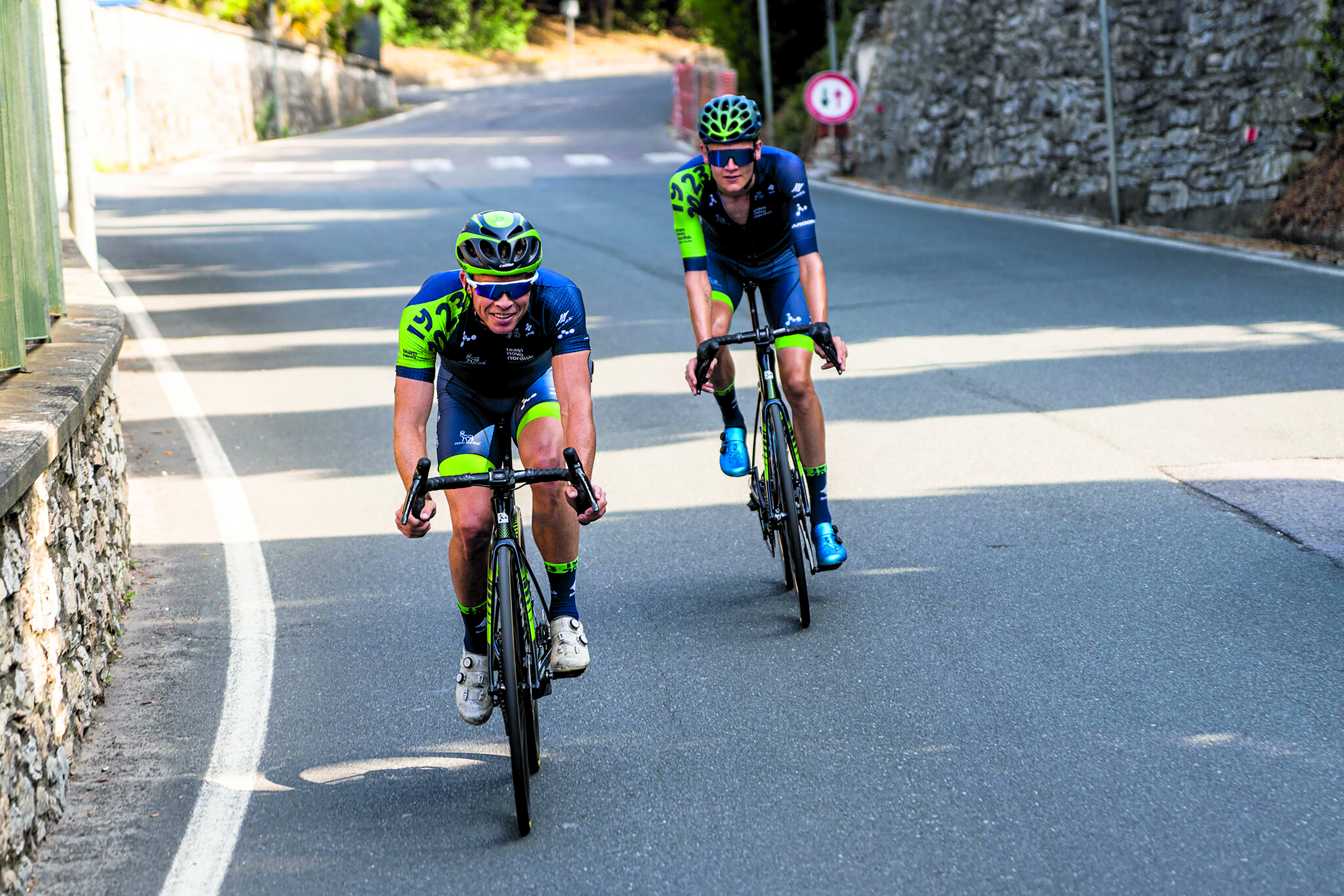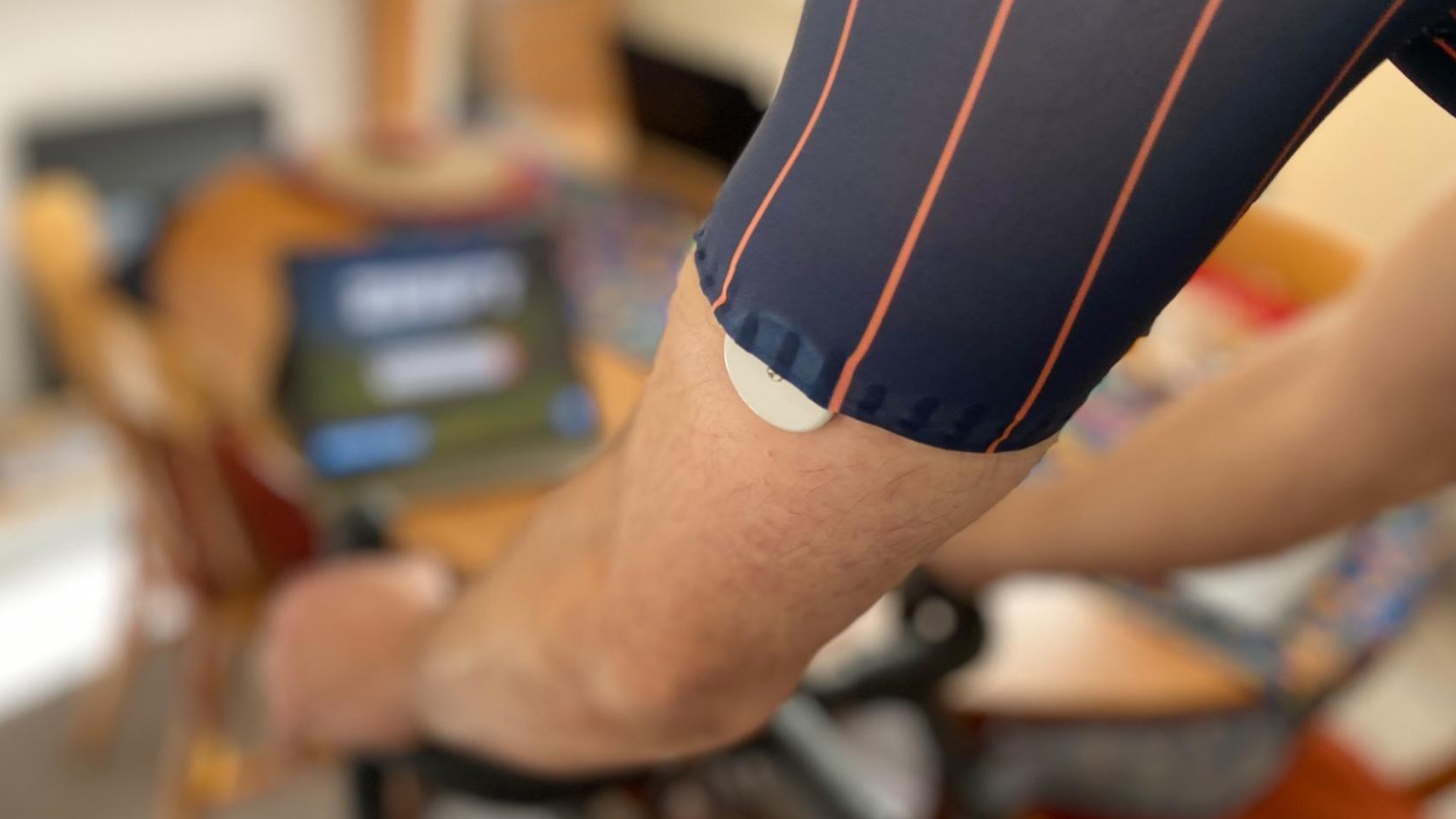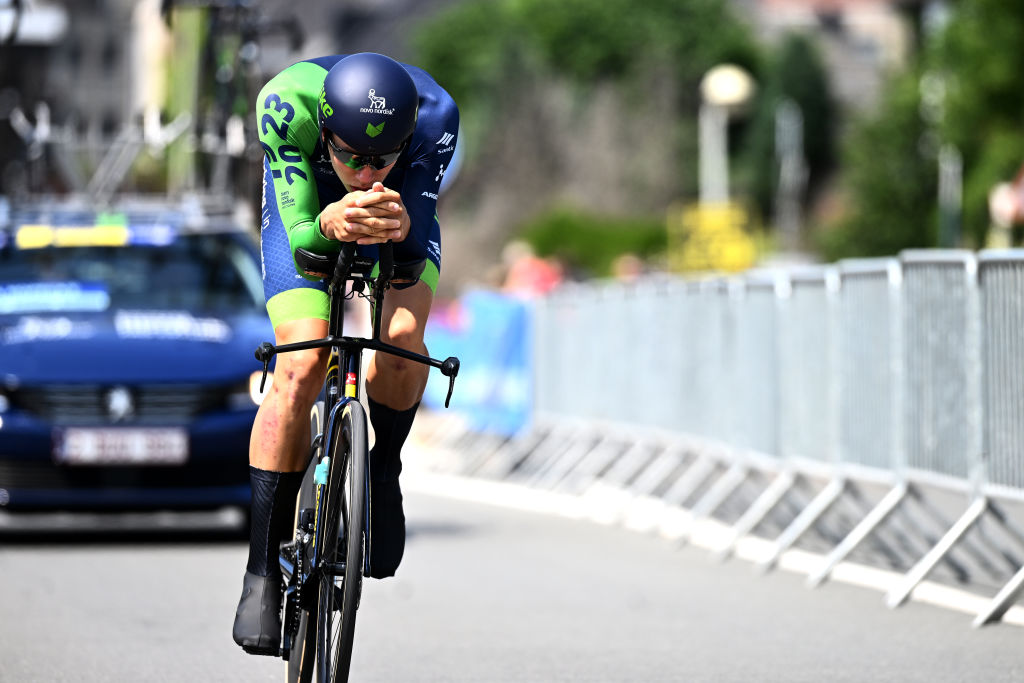
Phil Southerland is the cycling team owner and tech developer you’ve probably never heard of, but really should have. For more than 20 years he has used cycling to first keep himself alive and to then empower millions of others.
But, remarkably, he might never have had the opportunity to ride a bike at all. Aged just seven months old, he lost 40% of his body weight in one week, and every breath sounded like his last. “My mum thought she had a frail, dying baby in her arms,” the Florida-born American says. Doctors were stumped as to what the problem was and it was only when a nurse smelled his fruity breath and urged fellow medics to check his blood glucose levels that they got an answer – Southerland had type 1 diabetes, the world’s youngest person to be diagnosed as diabetic.
He was saved, but doctors warned his parents that he’d most likely be blind by 20 and dead by 25. He was instructed to take life-saving insulin before he could even walk and talk, but, unlike today, back in 1982 there was no way of monitoring one’s blood glucose levels, except by “squeezing urine out of my diaper”.
Southerland’s prognosis was grim, but what has transpired is an inspiring story of resilience and perseverance, and of an “obsession with monitoring my glucose levels, first not to go blind, but then to be the best athlete I could be. This obsession has driven my life,” he says.
Today, now aged 41, he is a father of four and a husband to Biljana, the founder of Team Novo Nordisk, an all-diabetes cycling team that’s been racing for almost two decades. But he’s also the brains behind Supersapiens, a real-time continuous glucose monitor (CGM) used by Jumbo-Visma among other pro teams and riders, that he hopes will revolutionise sports performance for athletes across the globe, regardless of whether they have diabetes or not.
Dealing with diabetes

Team Novo Nordisk is currently made up of 19 riders, all of whom have type 1 diabetes. In the past, they’ve employed non-diabetic riders. Over the years, the number of cyclists with diabetes attending team training camps to try and get a professional contract has skyrocketed, especially since Covid, which made virtual ‘try- outs’ more accessible, with more than 100 athletes living with the condition attempting to progress to in-person team camps. “Right now, I don’t have 15 diabetic athletes who could complete a three-week Grand Tour, but I know it will be possible one day,” Southerland says. “A diabetic Grand Tour team will be a viable option in 15 years and you’ll see it.”
Southerland’s mother, Joanna, was determined that her youngest son would not be beaten and defined by diabetes. “She said that if I was only going to live until I was 20, I may as well live a normal life, so she pushed me into sport,” Southerland recounts.
As a child, he became a swimmer, and he quickly stumbled upon a remarkable realisation. “I learned that when I was active, my insulin numbers were better, and if I could control my glucose levels, I could compete and win; if my glucose levels were bad, I’d lose. Basically better glucose control meant better sports performance.”
There was a far greater benefit too: it staved off blindness and premature death. “Sport saved my life,” he insists.
In his mid-teens, around the same time he first got his hands on a glucose control monitor, he evolved into a cyclist, winning frequently in the south-eastern states of the US and regularly placing in the top 10 of National Championships. But there were persistent challenges. “I would get such severe hypoglycemia at night,” he recalls, detailing the condition in which glucose levels dip below the healthy range, “that I’d have to set two alarms at night, one at 1am and the other at 4am, to check my glucose to make sure I wouldn’t die.”
His fear of death was well founded. “I was competing at the Milk Ras stage race in Ireland in 2002, and one stage I had a horrible bonk, losing 20 minutes. The woman at the host house gave me soup, but I said I needed cereal as I was completely empty. I hadn’t told her about my diabetes. Three hours later I found some real carbs, and I put my usual insulin dose in but I didn’t reduce it [to reflect the low carbohydrate intake]. My team-mate woke up at night when I was having a seizure. If he wasn’t in the room, I would have died.”
Some team-mates didn’t even know about his health issue. “I won one weekend race at the University of Georgia, and was injecting insulin afterwards when a team-mate spotted me and said, ‘Phil, I am so disappointed in you. Seriously? This is college racing, I cannot believe you’re cheating.’ He saw the needle and thought I was using performance-enhancing drugs. I told him I had diabetes and he said, ‘Wait, what, since when? I didn’t know.’”
Others did, though, and rejection by one American team aged 19 because of his diabetes stung. Then he had to turn down the offer of a Continental contract from a team in Belgium because his mother’s health insurance plan wouldn’t cover his medication fees outside of the US. “I couldn’t chase my cycling dream because of my diabetes. It was discrimination. But if someone said I couldn’t do something because of diabetes, I’d win to prove them wrong.”
And win he did. In 2005, Southerland founded the Team Type 1 cycling team, representing the estimated 10 million people who have the type 1 form of the condition. In 2006 they lined up at the 3,000-mile Race Across America. “People had never seen a team of athletes with diabetes before, and they all laughed at us. ‘Good luck, kid,’ they mocked.” They finished second, and won three of the following four editions.
It was the catalyst to become a pro team, Novo Nordisk (see breakout), that has competed at the second-tier ProTour level since 2011, and in WorldTour races like Milan-San Remo, Strade Bianche, Tirreno-Adriatico, and the Tours of California, Poland and UAE. “We have earned our place in the peloton, and though we don’t win much, we have used sport as a platform to talk about diabetes, and empowered people living with diabetes to believe that they can achieve their dreams.”
Creating Supersapiens

The Supersapiens app comes with a Libre Sense Glucose Sport Biosensor created by Abbott that is placed on the back of the arm and links to the Supersapiens app via Bluetooth, recording blood glucose data for 14 days. A subscription, which includes two biosensors and patches, costs around £140 a month. Year-round use costs around £1,700. CGM devices are currently banned by the UCI, cycling’s governing body, in professional races, but are permitted in training.
It was during 2008, the team’s first year as a UCI-registered team, that Southerland introduced CGM devices to his fellow 15 riders. He was convinced that non-diabetic athletes would benefit from being able to see their glucose levels in real time, but he kept being told that the technology didn’t yet exist to link a CGM to a bike computer. “I’d pull it out of my pocket, check it every 20 minutes, and adjust my food take like that,” he says. “I kept imagining the difference it would make if that data was constantly in front of me.”
In 2018, Chip Hawkins, the founder of Wahoo, turned Southerland’s dream into a reality, connecting CGM data via Bluetooth to a head unit. “When I could see that data minute by minute, everything about my fuelling changed and for the first time I was in control.” He then experimented. “In 2019, I tested it on the team’s riders and it was a game- changer. They realised how wrong their fuelling perceptions had been, and when they corrected it they all went faster.”
Not long afterwards, in partnership with the American medical company Abbott, Southerland created Supersapiens (see boxout), combining Abbott’s glucose sensing technology with Supersapiens’ app and personalised analytics. In no time, worldwide users were confirming what Southerland had known since his swimming days: by monitoring blood glucose levels, athletes could improve their output.
“There are three main advantages,” he says. “First, if you want to manage your weight, this product will help you; second, we’ve learned that sleep is better if your glucose levels are stable, and sleep is a huge thing for recovery; third, it makes sure you’re fuelling at the right times during exercise to deliver the best possible performance.”
To date, there have been no clinical trials looking at the effectiveness of CGM devices, and specifically Supersapiens, on athletes without diabetes, although Imperial College London recently began one which will reach its conclusion in two years. Given that the use of the tech in this way has only emerged recently, it is also too early to tell whether such monitors really do make that much of a positive difference to a non-diabetic sportsperson.
In 2020, he had meetings with Ineos Grenadiers and Jumbo-Visma about using Supersapiens, the two powerhouses of the men’s peloton. “Tim Kerrison [Ineos’s former head coach] didn’t like the product, but Jumbo did. Wout van Aert, Primož Roglic, Sepp Kuss and Robert Gesink were the first four athletes to use my product. Look at the direction those two teams have gone in since then – history tells you who made the right call.”
World Tour Mission

Southerland isn’t done yet. “I need Supersapiens to grow to the point where I can then fund my own WorldTour cycling team,” he says. “For that to happen, I need Supersapiens to be helping not just pro athletes, but the general population – the obese person sitting on the couch who wants to start exercising and learn by monitoring their glucose levels they can lose weight. I want Supersapiens to be in front of the world – a WorldTour team is a great way to do that.
“Garmin grew 80% when they were a title sponsor of a WorldTour team [between 2008 and 2014]. If we could replicate that, develop a sustainable project, we can change lives. I learned as a kid with diabetes that exercise kept me alive; with Supersapiens we have learned that glucose control and glucose stability leads to weight management, better sleep and better sporting performance. My mission is to bring diabetes health technology to the masses.” Will he ever pause for breath? “When my Supersapiens team is in the Tour de France, then I’ll allow myself a moment to reflect.”







